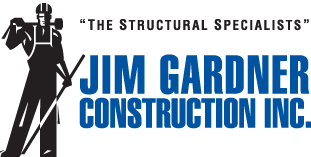Dear Jim: I have a sump pump in my basement that has been doing its job fine for the last 10 years when all of a sudden in the big rains starting in January it failed, flooding the entire space and ruining my hardwood floors, rugs, and damaging the baseboards and sheetrock. It was an expensive nightmare. Why did this happen, and how do I keep this happening again moving forward?
Sump pumps can be used in a variety of ways to keep basements from flooding, either as stand-alone units inside a basement or crawlspace, or outside the house as part of a perimeter drainage system for below grade basements. While the pumps themselves are generally reliable and can often run 20-30 years without issues, it is primarily external factors that lead to their failure which can be minimized if the systems are monitored.
Common Causes of Failure-
You need to check your pump at least twice a year and make sure it is plugged in and running, is in a clean basin not filled with dirt or debris, with a float that moves up and down freely. The pump should be big enough to do the job, with a ¾ horsepower motor if water needs to go uphill to the street. A check valve needs to be installed next to the pump to keep water from running back into the pit or it may run continuously or way too often. The most common problem is with the GFI outlet that they are normally plugged into. Lack of a proper waterproof cover can allow moisture into the outlet, causing it to fail, especially when it is outside. If the pump is not running for an extended period due to a failed outlet and it remains submerged it can rust out and no longer function. If this sounds like Greek to you find somebody who reads this language and have them review this information. Lack of attention and simple maintenance can have major consequences for finished basements.

A proper waterproof cover will protect this outlet.
Backup Systems Can Be a Lifesaver-
The lesson we learned this year from looking at many of these failures is that things can go wrong in a heartbeat. In an atmospheric river downpour a basement can fill up with several inches of water in 30 minutes or less, often when you are not around. Given that 100-year floods are something we may be getting every few years now we are installing mandatory backup systems with our drainage work, such as dual pumps with battery backups, inverters to run main pumps from battery power, and our new favorite the water-based pump that does not require electricity. We even have backups with that tie into the internet and will send you alerts and real time monitoring to your phone. Given that mother nature has a poor sense of humor and will likely cause this to happen while you are out of the country on winter break this may be something for you to consider if you have an existing system that may be at risk.

Examples of smart pumps and water-powered pumps
Conversations with Your Local Contractor is a feature by Jim Gardner of Jim Gardner Construction Inc. (with articles finessed by Lisa Gardner). If you have residential, homeowner questions OR ideas for an article you’d like Jim to highlight, please send an email to jim@jimgardnerconstruction.com.
Jim is a long-time Piedmont resident and has been doing structural repair and basement renovation in your neighborhood since 1983. To schedule an estimate or for more information please go to our website at jimgardnerconstruction.com.



